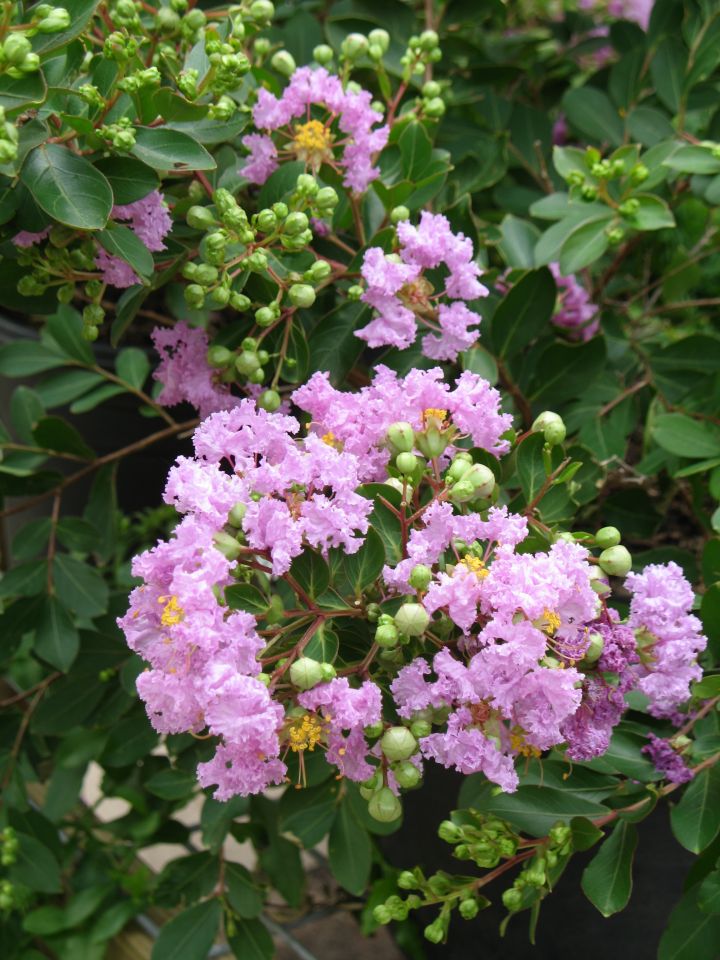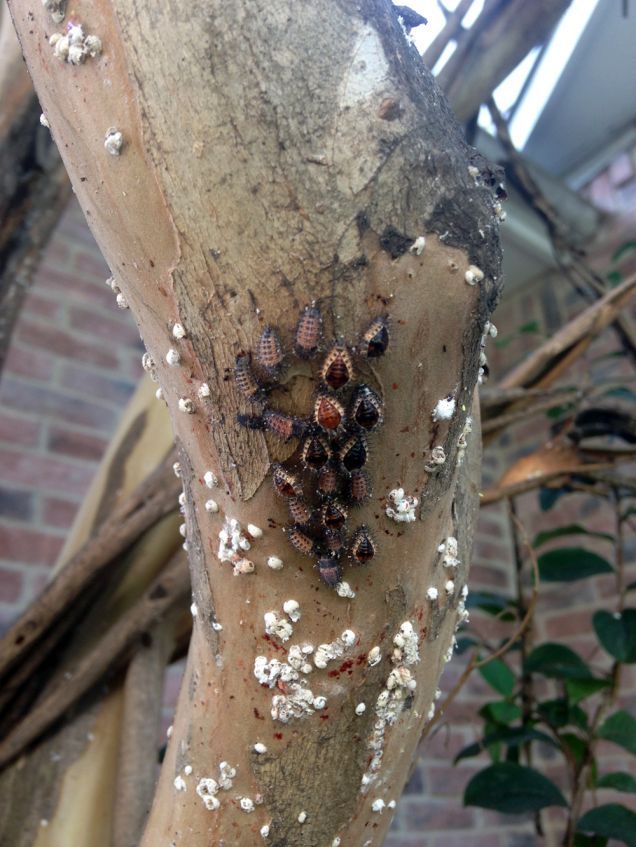Pest Alert: Crape Myrtle Bark Scale
June 6, 2016 | By webadmin
Crape myrtles are one of our most beloved ornamental trees here in the Dallas area. Their stunning summer blooms are something we always look forward to each year. Crape myrtles are drought tolerant and relatively easy to care for. And while they are generally thought of as a traditional, old fashioned shrub or tree, we feel they can also be used in more modern landscapes in their natural form; as their trunk forms and bark is quite striking.
However, no plant is bullet-proof when it comes to pest and diseases. And, certain insects are attracted to specific plants; so, when large numbers of one plant species are used in an area, it can often lead to new concentrated outbreaks of the insect.

Such is the case with Crape Myrtle Bark Scale (CMBS). This is a relatively new pest to the Dallas/Fort Worth area and while it is commonly found on crape myrtles, if left untreated, it can also spread to surrounding shrubs and trees such as beautyberry, boxwoods, cleyera, fig, persimmon and pomegranate. Scale insects can do a lot of damage in a small amount of time. And, they’re tough to get rid of.

Photo courtesy of Soils Alive. Visit their site at www.soilsalive.com
What is Crape Myrtle Bark Scale?
While the exact species name of this is insect has yet to be confirmed, it is thought to be of the Eriococcus family. The scale insects themselves are a white to gray color; the females ooze a pink to red liquid when crushed. Dozens of pink colored eggs can be found under the waxy webbing the adults leave behind. Adults are often found at oozing cuts or wounds on the tree or shrub.
Much like other scale insects it excretes a sticky “dew” that coats leaves, trunk and limbs of the infested crape myrtle.Unsightly sooty mold then grows on top of the dew, causing even more problems. While the sooty mold itself doesn’t necessarily do a lot of damage, when it grows on the leaves it can block them from photosynthesizing and reduce plant vigor.
A large infestation of CMBS can leave tree can leave a tree weakened and more susceptible to other pests and diseases.
Removing CMBS from Crape Myrtles.
While a fully effective treatment is not yet available for CMBS, there are some good cultural practices you can perform in the landscape to reduce pest pressure.
- First, planting crape myrtles in a full sun location will help cut down on pest problems. Crape myrtles that receive too much shade will always be stressed and more susceptible to pest problems.
- Smart watering and pruning of your crape myrtles is first and foremost the best way to prevent scale. Don’t overwater during times of rainfall, but do provide some deep waterings during hot, dry summers.
- If you do find CMBS on your trees, you can wash off the insects with a strong spray nozzle, then gently scrub the infected areas with a mild soap solution and soft brush. This will remove the mold, eggs and females, making it easier to manage with insecticides.
- Also, removing any loose bark is key as this is another place for the scale to hide, especially during bad weather months.
- Applying horticultural oil in late winter, when it is most susceptible to treatment, will help to suppress it.
If you find a population of crape myrtle bark scale on your trees or other landscape plants, follow the recommendations above. If the plant looks stressed, give us a call and we can perform a full property inspection to identify pest issue and make treatment recommendations.
